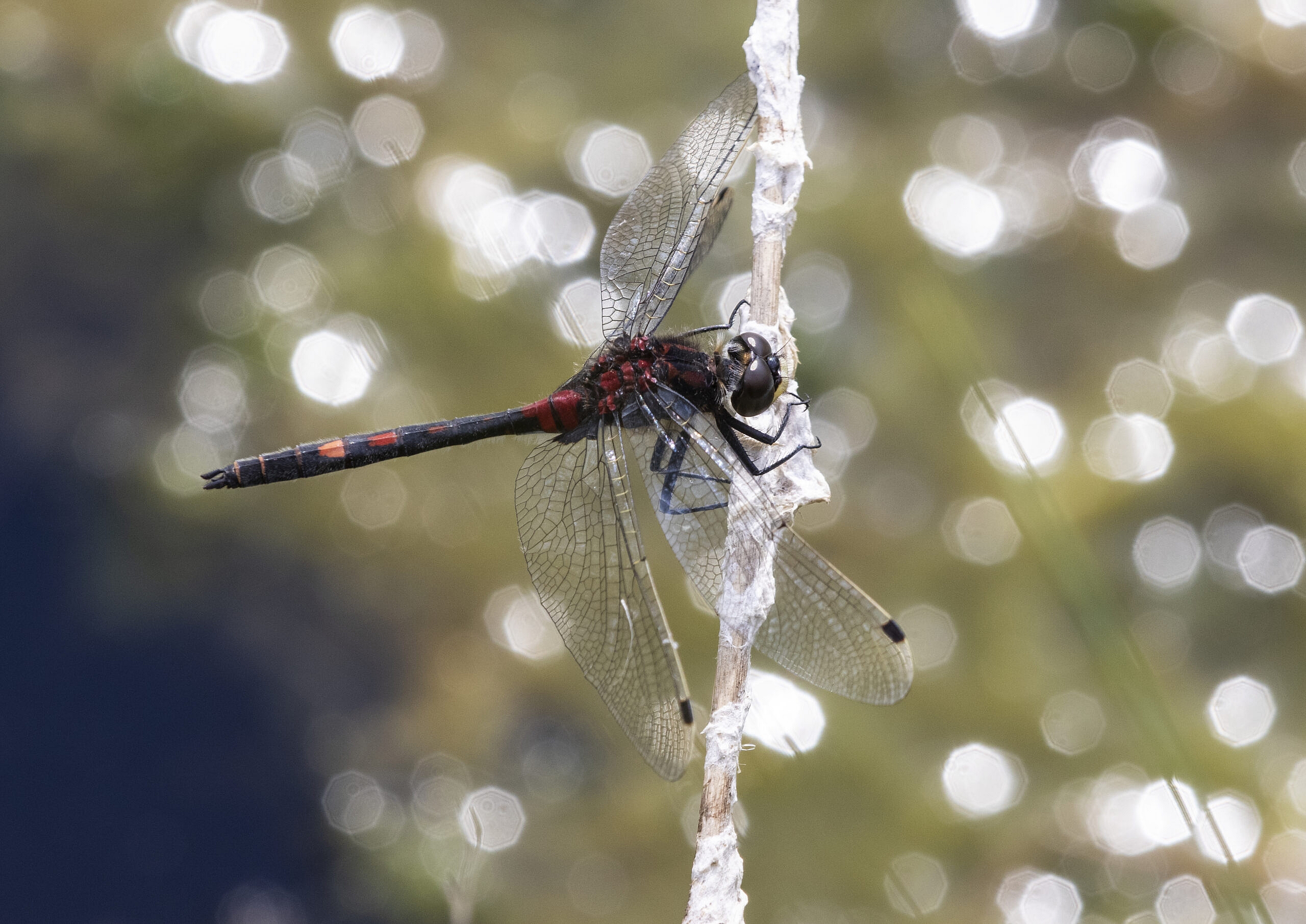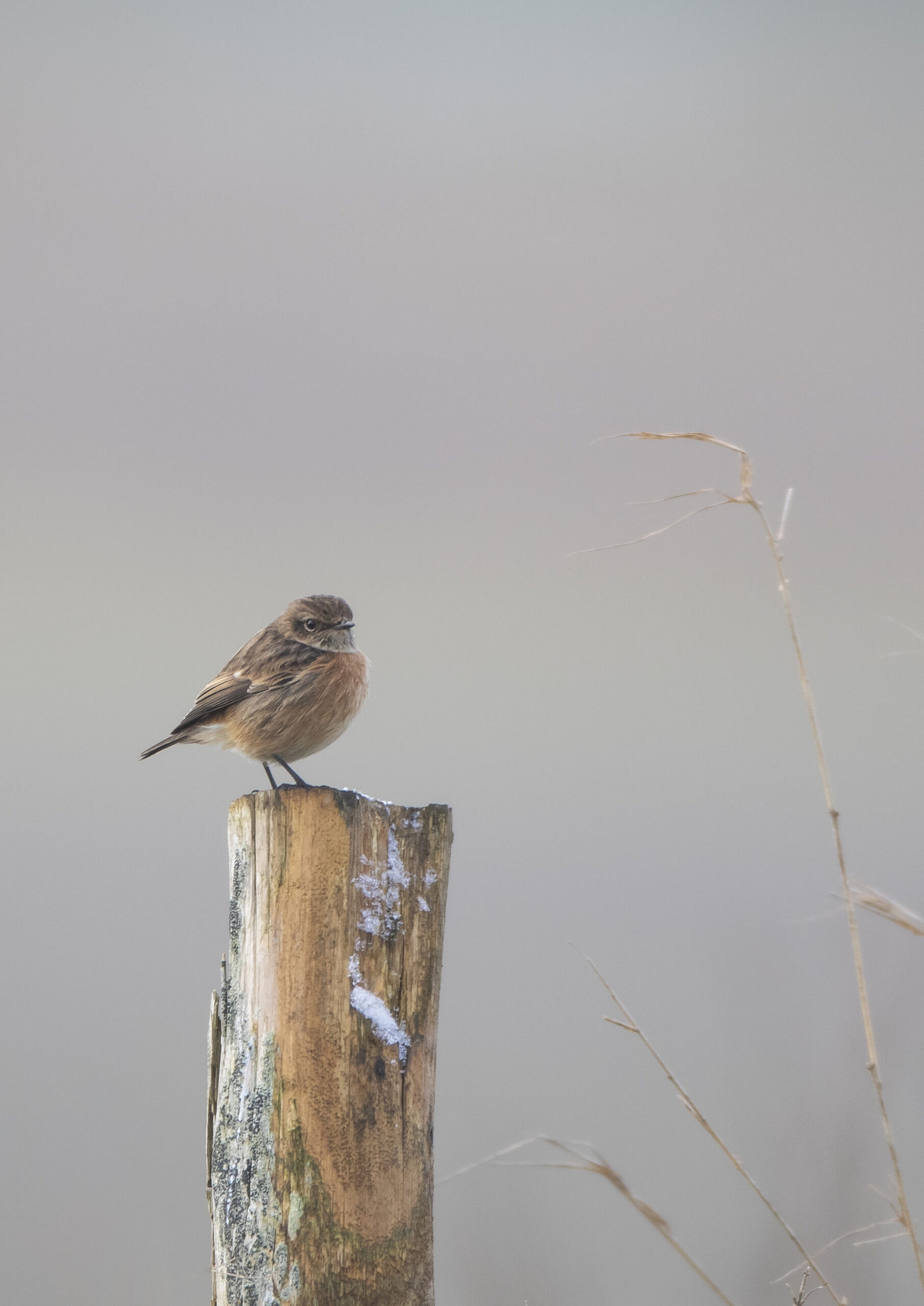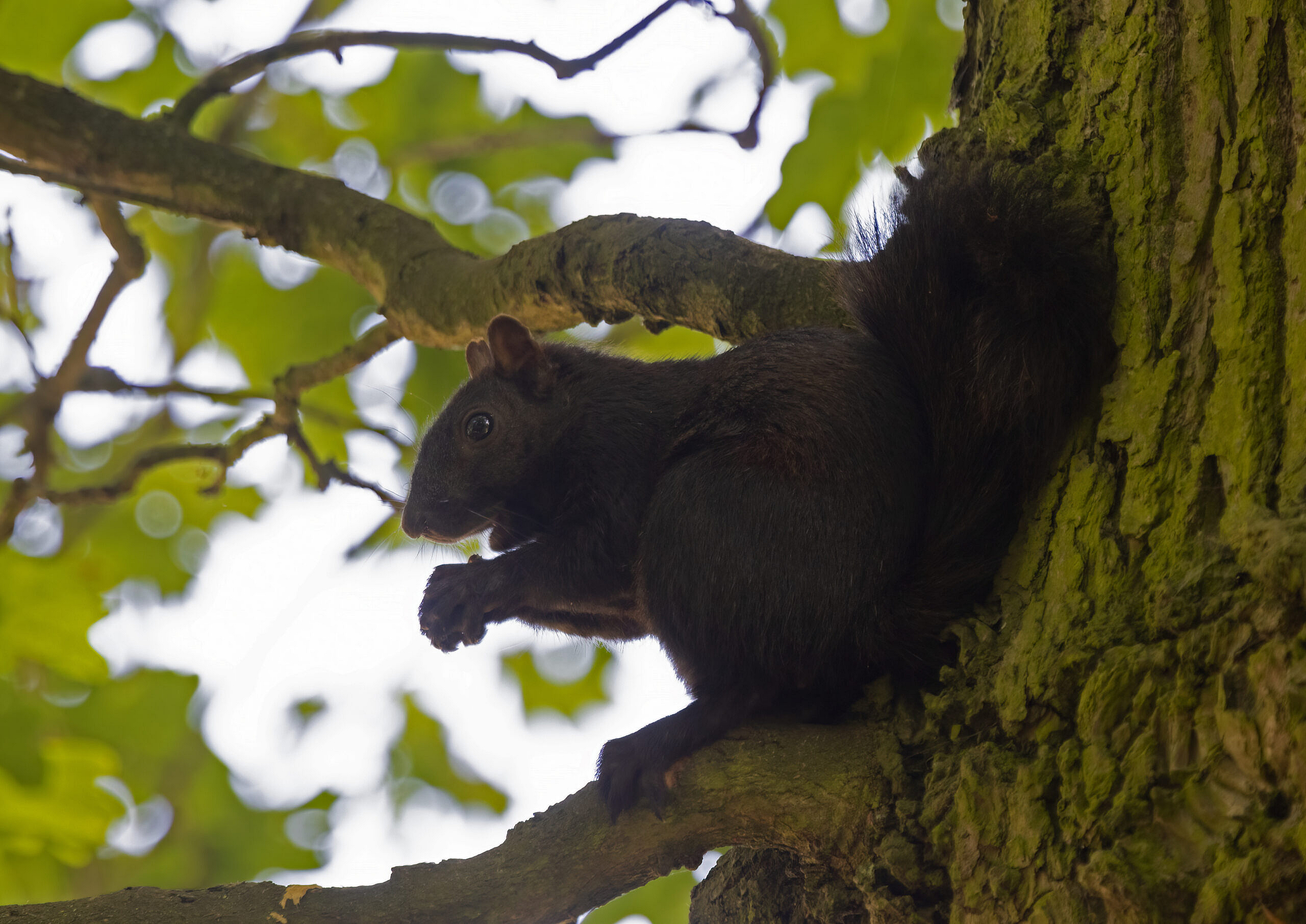Today was a day for the Odonoata or dragonflies to really start to show up. In my local area are some ponds, part of a flood relief scheme, and over the last few years they have sprouted, like a developing beard, the tall stems and fluffy heads of reedmace (called bullrush when I was young) and the sharp, spiked points of rushes. These shallow, warm pools are the perfect habitat for dragonflies, and I have watched over the years as the number of species has slowly increased. Today was the turn of the broad-bodied chaser, a corpulent dragonfly that looks rather unfortunately as though its back end has been run over by a car. But when recently emerged, as this one was, they are the colour of freshly poured gold.
Also emergent were some large red damselflies, which as the name suggests are larger than most damselflies and also… well, red. But then I spotted one which intrigued me. Now I should explain that damselflies are hugely challenging to identify because:
a) there are lot of different species often found flying together
b) A lot of the species look very similar indeed, and often come in colour variants – so exactly the same species can come in different colours. A bit like people, when you think about it.
c) young damselflies (called “tenerals”) change colour, sometimes dramatically so.
So a young damselfly of one species may look very much like a youngster or an adult from a different species. In some cases a correct identification may depend on a microscopic check on the shape of very small parts of this very small insect. In this case, the blue eye spots are like a common blue. The markings on the side probably rule out the Azure. I’m fairly sure it is a teneral female blue-tailed damselfly. But it could be a teneral emerald. Or perhaps something else. I’ll let you decide





Social Profiles